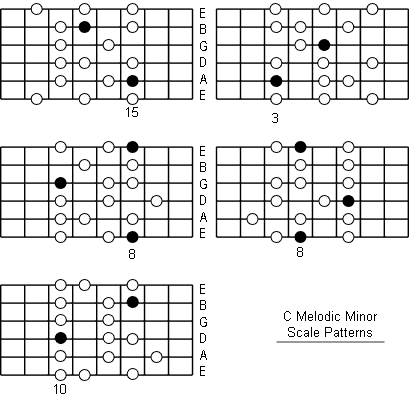How to Play Minor Scales on Guitar

In the Western music theory, minor scale comprises at least three essential scale degrees. Either it is tonic, a minor-third, or a perfect fifth. All of the minor scales are different from the major scales. In terms of scale degrees, the minor keys are half a step toned down; or semi-toned. In the most common terms, these minor scales can be divided into three sections: natural minor, harmonic minor and melodic minor scales.
Whenever the major and minor scales are played in the same keys, they are considered to be relative. It mostly starts with the sixth note, even if the natural minor scale has exactly the same notes as the major scale.
Instructions
-
1
Natural Minor Scale
A natural minor scale is quite simple to play. It follows a set-pattern. You have to start off whole, then play half then whole, whole and then half, whole, whole again. So basically it is played this way: whole, half, whole, whole, half, whole, whole. If you want to learn this in semi-tones, then it is played like this: (2 1 2 2 1 2 2). In case, you want to check the notations: 1 2 ♭3 4 5 ♭6 ♭7 8 is the perfect way to explain it.
Each and every major key has a minor. It always starts off with the sixth scale degree or step. It is equivalent to the Aeolian mode. Even though technically it is not the same, it is still considered to be the same once it is played in the minor scale. -
2
Harmonic Minor Scale
The notations used in the harmonic minor scale are almost likewise as the natural minor scale. However, the seventh degree is raised by a single semi-tone. This makes it the second augmented between right before the seventh degree and after the sixth degree – somewhere in between the two. The notations in this scale are: 1 2 ♭3 4 5 ♭6 7 8.
It is also referred to as the Mohammedan Scale as the upper tetrachord can be matched with the Hijaz jins, which is usually found in the Middle Eastern music. -
3
Melodic Minor Scale
This scale is a bit different from the harmonic and the natural minor scale. They are both involved in making the melodic minor scale. There is an ascending minor scale, and then there is a descending minor scale in the melodic minor scale. The two can be noted as: 1 2 ♭3 4 5 6 7 8 (ascending) and 1 2 ♭3 4 5 ♭6 ♭7 8 (descending).
In the upper tetra chord, it is extremely identical to its major scale. However, the descending can match up with the natural minor scale.







